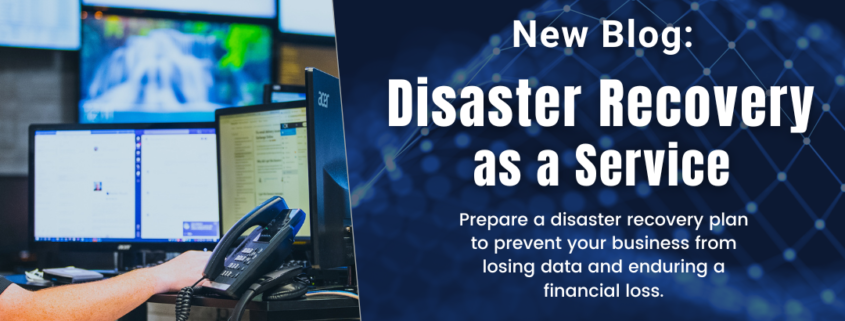Disaster Recovery as a Service
Many SMBs operate with a sense of unrealistic optimism when it comes to data loss and disaster recovery. However, the reality can be quite different and can negatively affect your business if you’re not vigilant. As the rate of digitalization increases, so does the risk of data loss. Can your business afford a data-loss incident?
It doesn’t matter if data loss happens because of human error, cyberattack or natural disaster. It can have far-reaching consequences such as:
- Severe downtime: For SMBs, per-hour downtime costs vary from $10,000 to $50,000.1
- Damage to reputation: One-third of customers will end their association with a business following a severe data loss.2
- Regulatory penalties: Failure to protect data can draw penalties worth 2% to 4% or more of company turnover.3
- Permanent closure: Some businesses are unable to recover from an incident and close permanently.
Prioritizing backup and disaster recovery for your business is very important. A comprehensive backup and disaster recovery solution provides secure, uninterrupted backup and quick data recovery — with a cloud-based architecture that ensures the business runs seamlessly in the event of a disaster.
Key Terms Used in Backup and Disaster Recovery
The following terms will give you an idea about the type of actions and processes you should aim to implement within your business:
- Minimum Business Continuity Objective (MBCO): MBCO signifies the minimum level of output needed after severe disruption to achieve business objectives.
- Maximum Tolerable Period of Disruption (MTPD): MTPD is the duration after which the impact on a business caused by minimal or zero output becomes intolerably severe.
- Recovery Time Objective (RTO): RTO is the time it takes before employees can start working after a data-loss event. It’s usually measured in minutes.
- Recovery Point Objective (RPO): RPO is the amount of work that can be lost and will need to be done again after a data-loss event. It’s usually measured in seconds.
Deploy Backup and Disaster Recovery Today
Having an effective backup and disaster recovery solution provides several benefits. Here are the top six:
- Stay protected against natural disasters
While it’s impossible to stop a natural disaster, you can ensure your data is protected and take the necessary measures to prevent downtime.
- Minimize the impact of a cyberattack
With the rate of cyberattacks going through the roof and with SMBs being a constant target of attacks, it is essential to have a robust backup and disaster recovery solution to protect your business.
- Safeguard sensitive data
If your business handles sensitive data like Personally Identifiable Information (PII), measures should be taken to ensure it never ends up in the wrong hands. Safeguarding all critical data can build your business’s reputation and prevent regulatory penalties.
- Quick recovery
It doesn’t matter how disaster strikes. What matters is how quickly your business bounces back. A good backup and disaster recovery solution helps you get up and running as soon as possible.
- Reduce the impact of human error
From accidental or intentional misdelivery or deletion to corruption of data, employees can pose a security threat to your business. Deploying backup and disaster recovery is, therefore, crucial. You must also train your employees on the difference between acceptable and unacceptable behavior.
- Tackle system failure
Unexpected system failure can lead to downtime if you don’t equip your business with backup and disaster recovery.
Remember, it’s your responsibility to protect your business from data loss and its chaotic aftereffects. If you can’t handle this alone, don’t worry. We’re here for you. With our backup and disaster recovery solutions, we can help build a resilient strategy to protect your business against data loss and give you much-needed peace of mind in the event of a disaster.
Source: Kaseya Powered Services Pro
- TechRadar
- IDC Report
- GDPR Associates




